
The moose or elk is the world's tallest, largest and heaviest extant species of deer and the only species in the genus Alces. It is also the tallest, and the second-largest, land animal in North America, falling short only of the American bison in body mass. Most adult male moose have broad, palmate antlers; other members of the deer family have pointed antlers with a dendritic ("twig-like") configuration. Moose inhabit the circumpolar boreal forests or temperate broadleaf and mixed forests of the Northern Hemisphere, thriving in cooler, temperate areas as well as subarctic climates.

Hunting is the human practice of seeking, pursuing, capturing, or killing wildlife or feral animals. The most common reasons for humans to hunt are to exploit the animal's body for meat and useful animal products, for recreation/taxidermy, although it may also be done for non-exploitative reasons such as removing predators dangerous to humans or domestic animals, to eliminate pests and nuisance animals that damage crops/livestock/poultry or spread diseases, for trade/tourism, or for ecological conservation against overpopulation and invasive species.

The Himalayan tahr is a large even-toed ungulate native to the Himalayas in southern Tibet, northern India, western Bhutan and Nepal. It is listed as Near Threatened on the IUCN Red List, as the population is declining due to hunting and habitat loss.

The chamois or Alpine chamois is a species of goat-antelope native to the mountains in Southern Europe, from the Pyrenees, the Alps, the Apennines, the Dinarides, the Tatra to the Carpathian Mountains, the Balkan Mountains, the Rila–Rhodope massif, Pindus, the northeastern mountains of Turkey, and the Caucasus. It has also been introduced to the South Island of New Zealand. Some subspecies of chamois are strictly protected in the EU under the European Habitats Directive.

The sika deer, also known as the Northernspotted deer or the Japanese deer, is a species of deer native to much of East Asia and introduced to other parts of the world. Previously found from northern Vietnam in the south to the Russian Far East in the north, it is an uncommon species that has been extirpated in most areas of its native range, except in Japan, where it is overabundant and present in very large numbers.

Fiordland National Park is a national park in the south-west corner of South Island of New Zealand. It is the largest of the 13 national parks in New Zealand, with an area covering 12,607 km2 (4,868 sq mi), and a major part of the Te Wāhipounamu a UNESCO World Heritage Site established in 1990. The park is administered by the Department of Conservation. The southern ranges of the Southern Alps cover most of Fiordland National Park, combined with the deep glacier-carved valleys.
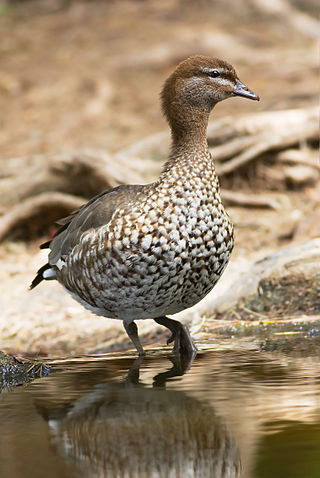
The Australian wood duck, maned duck or maned goose is a dabbling duck found throughout much of Australia. It is the only living species in the genus Chenonetta. Traditionally placed in the subfamily Anatinae, it might belong to the subfamily Tadorninae (shelducks); the ringed teal may be its closest living relative.

Game or quarry is any wild animal hunted for animal products, for recreation ("sporting"), or for trophies. The species of animals hunted as game varies in different parts of the world and by different local jurisdictions, though most are terrestrial mammals and birds. Fish caught non-commercially are also referred to as game fish.
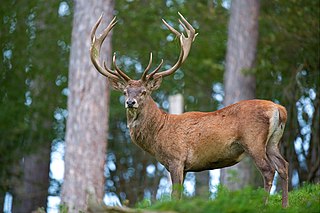
The red deer is one of the largest deer species. A male red deer is called a stag or hart, and a female is called a doe or hind. The red deer inhabits most of Europe, the Caucasus Mountains region, Anatolia, Iran, and parts of western Asia. It also inhabits the Atlas Mountains of Northern Africa; being the only living species of deer to inhabit Africa. Red deer have been introduced to other areas, including Australia, New Zealand, the United States, Canada, Peru, Uruguay, Chile and Argentina. In many parts of the world, the meat (venison) from red deer is used as a food source.

The sambar is a large deer native to the Indian subcontinent, South China and Southeast Asia that is listed as a vulnerable species on the IUCN Red List since 2008. Populations have declined substantially due to severe hunting, local insurgency, and industrial exploitation of habitat.
Helicopter hunting of deer has occurred in the Fiordland area of New Zealand since the 1960s. As long ago as the 1920s, introduced European deer plagued the Fiordland National Park to the detriment of the native New Zealand flora and fauna. The New Zealand government placed a bounty on the deer, paying local hunters for each animal removed from the park. With the market for venison and deerskin, by the 1960s this had proved a lucrative enough business for several hunters to invest in helicopters, to travel fast through the rugged landscape.

Wildlife management is the management process influencing interactions among and between wildlife, its habitats and people to achieve predefined impacts. It attempts to balance the needs of wildlife with the needs of people using the best available science. Wildlife management can include wildlife conservation, gamekeeping and pest control. Wildlife management draws on disciplines such as mathematics, chemistry, biology, ecology, climatology and geography to gain the best results.
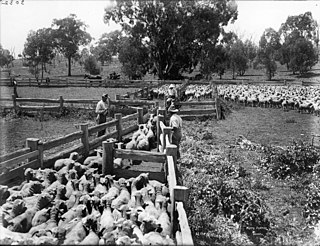
Culling is the process of segregating organisms from a group according to desired or undesired characteristics. In animal breeding, it is removing or segregating animals from a breeding stock based on a specific trait. This is done to exaggerate desirable characteristics, or to remove undesirable characteristics by altering the genetic makeup of the population. For livestock and wildlife, culling often refers to killing removed animals based on their characteristics, such as their sex or species membership, or as a means of preventing infectious disease transmission.
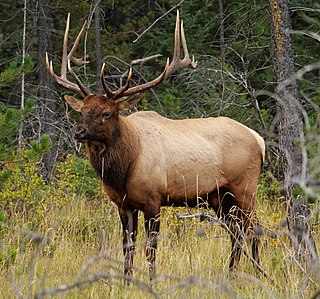
The elk, or wapiti, is the second largest species within the deer family, Cervidae, and one of the largest terrestrial mammals in its native range of North America and Central and East Asia. The word "elk" originally referred to the European variety of the moose, Alces alces, but was transferred to Cervus canadensis by North American colonists. The name "wapiti" derives from a Shawnee and Cree word meaning "white rump" for the distinctive light fur in the rear region, just like the Bighorn Sheep.

Deer hunting is hunting deer for meat and sport, an activity which dates back tens of thousands of years. Venison, the name for deer meat, is a nutritious and natural food source of animal protein that can be obtained through deer hunting. There are many different types of deer around the world that are hunted for their meat. For sport, often hunters try to kill deer with the largest and most antlers to score them using inches. There are two different categories of antlers. They are typical and nontypical. They measure tine length, beam length, and beam mass by each tine. They will add all these measurements up to get a score. This score is the score without deductions. Deductions occur when the opposite tine is not the same length as it is opposite. That score is the deducted score.
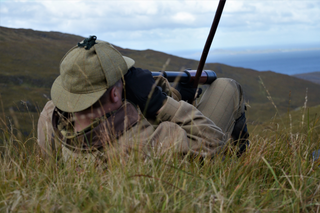
Deer stalking, or simply stalking, is a British term for the stealthy pursuit of deer on foot to hunt for meat, leisure, trophy, or to control their numbers. As part of wildlife management, just as with rabbiting and boar hunting, deer stalking aims to reduce crop damage. Additionally, deer stalking has long been considered a pastime sport.
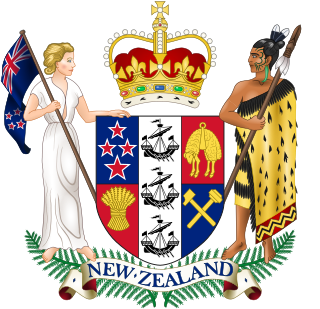
Wildlife Act 1953 is an Act of Parliament in New Zealand. Under the act, the majority of native New Zealand vertebrate species are protected by law, and may not be hunted, killed, eaten or possessed. Violations may be punished with fines of up to $100,000.

A professional hunter is a person who hunts and/or manages game by profession. Some professional hunters work in the private sector or for government agencies and manage species that are considered overabundant, others are self-employed and make a living by selling hides and meat, while still others guide clients on big-game hunts.
Rex Forrester was a recognised New Zealand hunting and fishing specialist. He was known for his deer culling, helicopter hunting, live deer capture, pig hunting and trout fishing within New Zealand and Australia. He was also an outdoor sports author who published nine books.
Australia has a population of about 25 million, with the Commonwealth Government's 2019 survey estimating there are 640,000 recreational hunters in the country. There are around 5.8 million legally owned guns in Australia, ranging from airguns to single-shot, bolt-action, pump-action, lever-action or semi-automatic firearms.


















